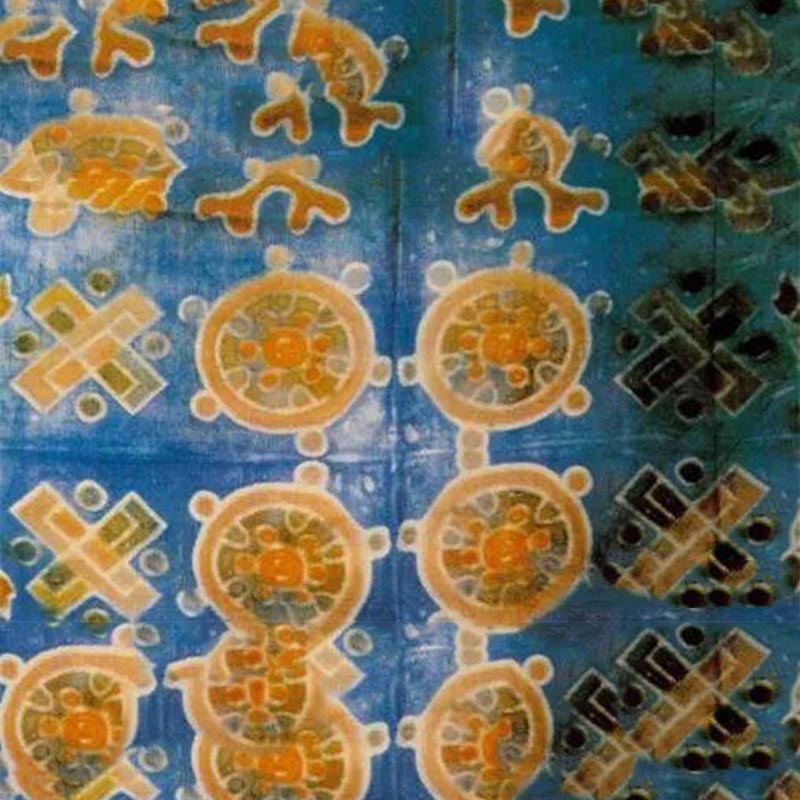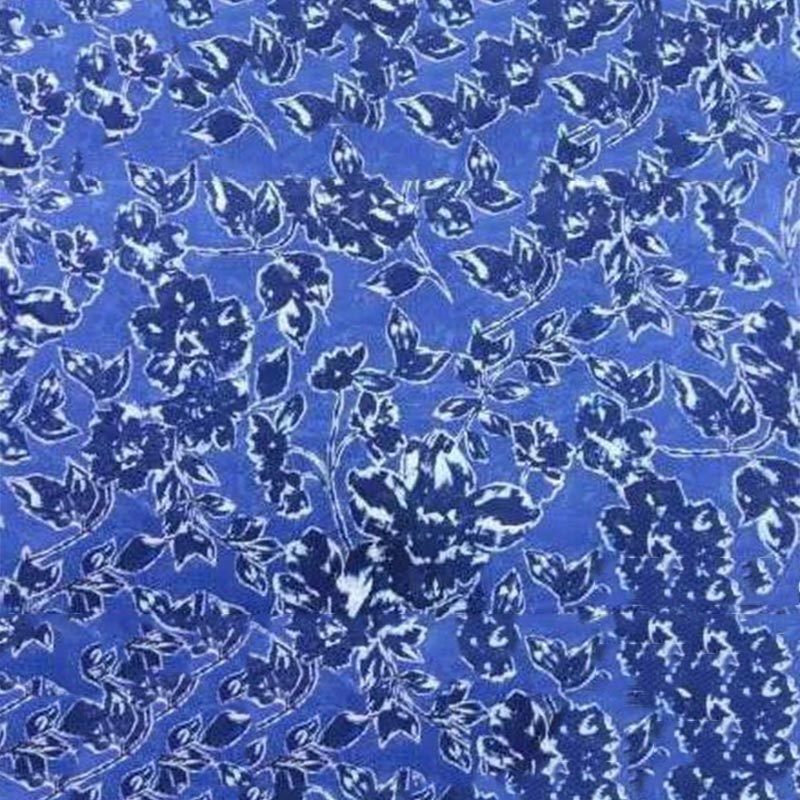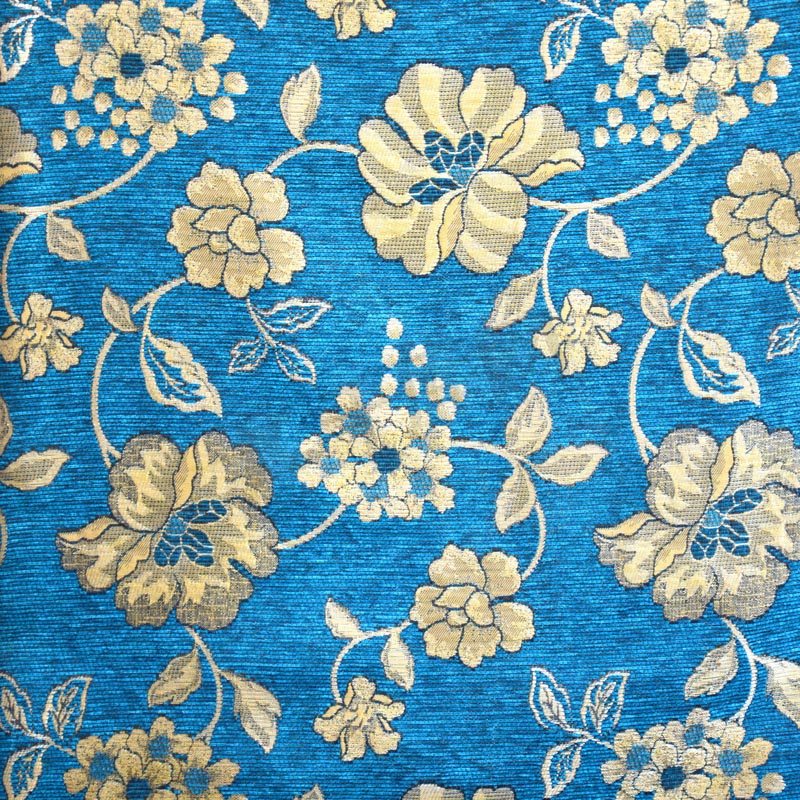Basic concept of printing
1. Printing: The processing process of printing flower patterns with certain dyeing fastness on textiles with dyes or pigments.
2. Classification of prints
The object of printing is mainly fabric and yarn. The former attaches the pattern directly to the fabric, so the pattern is more clear. The latter is to print the pattern on a collection of yarns arranged in parallel, and weave the fabric to produce a hazy pattern effect.
3. The difference between printing and dyeing
(1) Dyeing is to dye the dye evenly on the textile to obtain a single color. Printing is the printing of one or more colors on the same textile pattern, in fact, local dyeing.
(2) staining is the dye to dye solution, through the medium of water do dye on the fabric. Printing with the help of slurry as a dyeing medium, the dye or pigment printing paste printed on the fabric, after drying, in accordance with the nature of the dye or color for steaming, color rendering and other follow-up treatment, so that it dyed or fixed on the fiber, and finally after soap, water, remove the floating color and color paste in the paint, chemical agents.
4. Pretreatment before printing
Similar to the dyeing process, the fabric must be pre-treated before printing to obtain good wettability so that the color paste enters the fiber evenly. Plastic fabrics such as polyester sometimes need to be heat-shaped to reduce shrinkage and deformation during the printing process.
5. Method of printing
According to the printing process, there are direct printing, anti-dyeing printing and discharge printing. According to the printing equipment, there are mainly roller printing, screen printing and transfer printing, etc. From the printing method, there are manual printing and mechanical printing. Mechanical printing mainly includes screen printing, roller printing, transfer printing and spray printing, the first two applications are more common.
6. Printing method and its characteristics
Fabric printing according to the printing equipment can be divided into: screen printing, roller printing, heat transfer printing, wood template printing, hollow plate printing, tie-dye, batik, splash printing, hand-painted printing and so on. There are two printing methods of commercial importance: screen printing and roller printing. The third method is heat transfer printing, which is of relatively low importance. Other printing methods rarely used in textile production are traditional wood stencil printing, wax valerian (i.e. Wax resistant) printing, yarn tie-dye printing and resistant printing. Many textile printing plants use screen printing and roller printing to print fabrics. Most heat transfer printing carried out by printing plants is also printed in this way.
7. Traditional printing techniques
(1) Wood template printing: The method of printing on fabric in raised wood.
(2) hollow-type printing: It is mainly divided into three categories: hollow-type white paste anti-dye indigo printing, hollow-type white paste anti-dye printing and hollow-type color printing direct printing.
(3) Tie-dye printing: The use of string on the blank cloth, sewn into a certain fold and then tied firmly, after dyeing to obtain patterns.
(4) Batik printing: Apply the parts that need to show patterns on cotton, silk and other fabrics, and then dye or brush to dye the wax-free parts of the fabric, and then remove the wax stains in boiling water or specific solvents to make the fabric show patterns.
(5) Splash printing: splash or brush the silk fabric with acid dye at will, and then sprinkle salt on the screen while it is not dry, with the neutralization of salt and acid dye, forming a natural flow of abstract patterns on the silk. Often used in silk.
(6) Hand-painted printing: A printing method of directly dipping a pen into the dye to depict the pattern on the fabric.
8. Screen printing
Screen printing includes the preparation of a printing screen, a printing screen (The screen used for the printing process was once made of thin silk, the process is called screen printing is made of nylon, polyester or wire fabric with fine mesh stretched over a wooden or metal frame. The screen fabric is coated with an opaque, non-porous film. Where there is a pattern, the opaque film should be removed, leaving a screen plate with fine mesh, and this area is the part where the pattern will be printed. Most commercial screen fabrics are first coated with a photosensitive film, and then the film is removed by a photosensitive method to reveal the pattern. Place a screen over the fabric to be printed for printing. Pour the print paste into the print frame and force it through the mesh of the screen by using a scraper (a tool similar to a wiper on a car windshield). Each color in the printing pattern requires a separate screen, the purpose of printing a different color.
9. Manual screen printing
Hand screen printing is commercially produced on long tables (up to 60 yards). The printed roll of cloth is spread smoothly on the table, and the surface of the table is pre-coated with a small amount of sticky material. The printer then continuously moves the frame along the entire table, printing one frame at a time, until the fabric is completely printed. Each frame corresponds to a printed pattern. The production rate of this method is 50-90 yards per hour. Commercial hand screen printing is also used in large quantities to print cut pieces. In the cloth printing process, the garment making process and the printing process are arranged together.
Custom or unique designs are printed on the pieces before they are sewn together. Because manual screen printing can produce large mesh frames for large patterns, fabrics such as beach towels, innovative printed aprons, curtains and shower curtains can also be printed by this printing method. Hand-screen printing is also used to print limited quantities of highly fashionable women's clothing and to print small batches of market-testing products.
(1) Automatic screen printing
Automatic screen printing (or flat screen printing) is the same as manual screen except that the process is automated, so it is faster. The printed fabric is conveyed through a wide rubber band to the screen, rather than being placed on a long table (as is the case with manual screen printing). Like manual screen printing, automatic screen printing is an intermittent rather than a continuous process.
In this process, the fabric moves under the screen, then stops, and the screen is scratched by a scraper (automatic scraping), after which the fabric continues to move under the next frame, at a production rate of about 500 yards per hour. Automatic screen printing can only be used for the whole roll of fabric, cut pieces are generally not printed in this way. As a commercial production process, due to the preference for circular screen printing with higher production efficiency, the output of automatic screen printing (referring to flat screen printing) is declining.
(2) Rotary screen printing
Rotary screen printing differs from other screen printing methods in several important ways. Rotary screen printing, like the roller printing described in the next section, is a continuous process in which the printed fabric is transported through a wide rubber band under a moving cylinder. In screen printing, the production speed of circular screen printing is the fastest, greater than 3,500 yards per hour. Use seamless perforated metal mesh or plastic mesh. The largest circle is greater than 40 inches in circumference, so the largest flower-back size is also greater than 40 inches. Rotary screen printing machines of more than 20 sets of colors have also been produced, and this printing method is slowly replacing cylinder printing.
(3) Roller printing
Similar to newspaper printing, roller printing is a high-speed process that can produce more than 6,000 yards of printed fabric per hour. This method is also called mechanical printing. In roller printing, the pattern is printed on the fabric by an engraved copper drum (or roller). The copper drum can be carved closely arranged very fine lines, so it can print very detailed, soft patterns. For example, the fine, dense Pelizli scroll printing is a type of pattern printed by roller printing.
Cylinder engraving should be completely consistent with the design of the pattern designer, and each color needs a engraving roller (in the textile industry special printing processing, five roller printing, six roller printing, etc., commonly used to represent five sets of colors or six sets of colors roller printing). Roller printing is the least used mass printing production method, and the output continues to decline every year. This method would not be economical if the quantities produced for each pattern were not very large.
(4) Heat transfer printing
The principle of heat transfer printing is somewhat similar to the transfer printing method. In heat transfer printing, the pattern is first printed on paper containing disperse dyes and printing inks, and then the printed paper (also known as transfer paper) is stored for use in textile printing plants. When the fabric is printed, the heat transfer printing machine makes the transfer paper and the unprinted face to face stick together, and passes through the machine at about 210 ° C (400T), at such high temperatures, the dye on the transfer paper sublimates and transfers to the fabric, completing the printing process without further processing. The process is relatively simple and does not require the expertise necessary in the production of roller printing or rotary screen printing Disperse dyes are the only dyes that can sublimate, and in a sense the only dyes that can heat transfer flowers, so the process can only be used on fabrics composed of fibers that have an affinity for such dyes, including acetate fibers, acrylonitrile fibers, polyamide fibers (nylon) and polyester fibers.
(5) Jet printing
Jet printing is to spray small drops of dye and stay on the exact position of the fabric, the nozzle and pattern formation used to spray the dye can be controlled by the computer, and can obtain complex patterns and precise pattern cycles. Jet printing eliminates the delay and cost associated with engraving rollers and making screens, a competitive advantage in a fast-changing textile market.
The jet printing system is flexible and fast, and can quickly change from one pattern to another. Printed fabrics are not tensioned (that is, the pattern is not distorted by stretching), and the surface of the fabric is not rolled, thus eliminating potential problems such as fabric fuzz or fleece. However, this process cannot print fine patterns, the outline of the pattern is blurred. At present, the jet printing method is almost used for carpet printing, and it is not an important process for clothing textile printing. However, with the research and development of mechanical and electronic control technology, this situation may change.
Post time: Jan-22-2025









